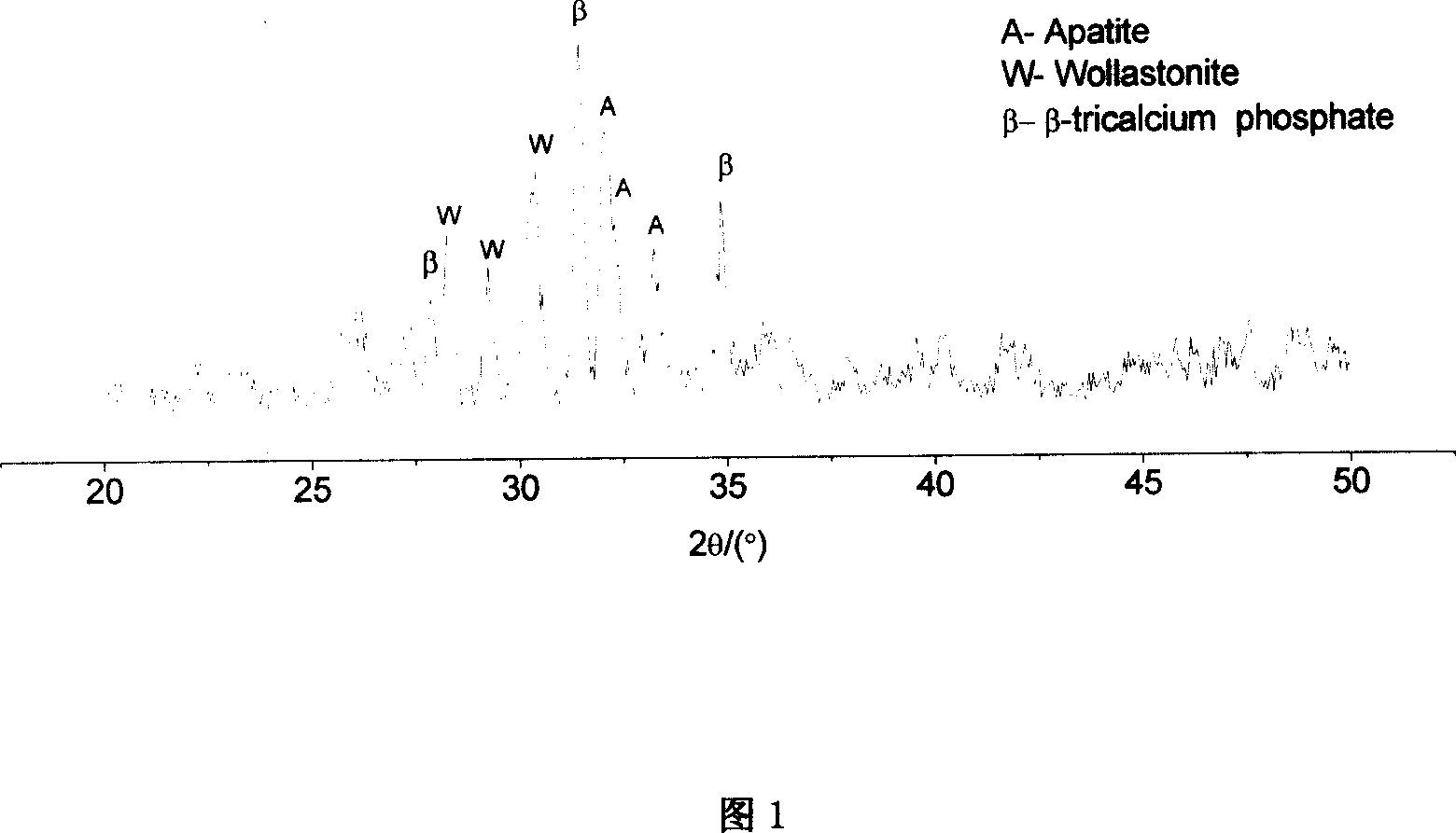Composite organism ceramic material composed of apatite-wollastonite/beta-tricalcium phosphate
A technology of composite bioceramics and tricalcium phosphate, which is applied in the fields of inorganic non-metallic materials and biomedical engineering, and achieves the effects of good biological activity, favorable adhesion and good cell compatibility.
- Summary
- Abstract
- Description
- Claims
- Application Information
AI Technical Summary
Problems solved by technology
Method used
Image
Examples
example 1
[0021] 1. Using the self-developed sol-gel method to prepare highly active and fine AW GC precursor powder (patent application number: 200510021184.0), the basic steps are: first fully hydrolyze ethyl orthosilicate and triethyl phosphate in ethanol , and then dissolve the easily hydrolyzed inorganic salts in organic reagents successively, and make them react with water to form a gel through hydrolysis and polycondensation process, then aging, drying, and thermally decomposing at 500°C to remove residual organic matter and Moisture, the preparation of fine precursor powder;
[0022] 2. Preparation of TCP precursor powder: high-purity fine CaCO 3 Blend into a paste. Add phosphoric acid solution dropwise under ultrasonic stirring at room temperature, react according to Ca / P=1.5, wash and dry the precipitate to obtain the TCP precursor;
[0023] 3. Preparation of apatite-wollastonite bio-glass ceramics (AW GC) / β-tricalcium phosphate (β-TCP) composite bioactive ceramics:
[0024...
example 2
[0029] 1. Prepare AW basic glass powder by melting method, the basic steps are: MgO4.6, CaO44.9, SiO 2 34.2, P 2o 5 16.3, CaF 2 0.5 of the mixture (heaviness percentage) was melted in a platinum crucible at 1450°C for 2 hours, then quenched into a frit, crushed and sieved to obtain glass powder;
[0030] 2. Preparation of TCP precursor powder: Ca(NO 3 ) 2 and (NH 4 ) 2 HPO 4 Carry out chemical precipitation reaction, adjust the pH to 11-12 with ammonia water, react for 12 hours, filter, wash and dry to obtain the precursor powder;
[0031] 3. Preparation of apatite-wollastonite bio-glass ceramics (AW GC) / β-tricalcium phosphate (β-TCP) composite bioactive ceramics: AW GC / β-TCP was prepared in accordance with the method described in step 3 of Example 1 Composite bioactive ceramics.
PUM
| Property | Measurement | Unit |
|---|---|---|
| particle size (mesh) | aaaaa | aaaaa |
| size | aaaaa | aaaaa |
| porosity | aaaaa | aaaaa |
Abstract
Description
Claims
Application Information
 Login to View More
Login to View More - R&D
- Intellectual Property
- Life Sciences
- Materials
- Tech Scout
- Unparalleled Data Quality
- Higher Quality Content
- 60% Fewer Hallucinations
Browse by: Latest US Patents, China's latest patents, Technical Efficacy Thesaurus, Application Domain, Technology Topic, Popular Technical Reports.
© 2025 PatSnap. All rights reserved.Legal|Privacy policy|Modern Slavery Act Transparency Statement|Sitemap|About US| Contact US: help@patsnap.com


